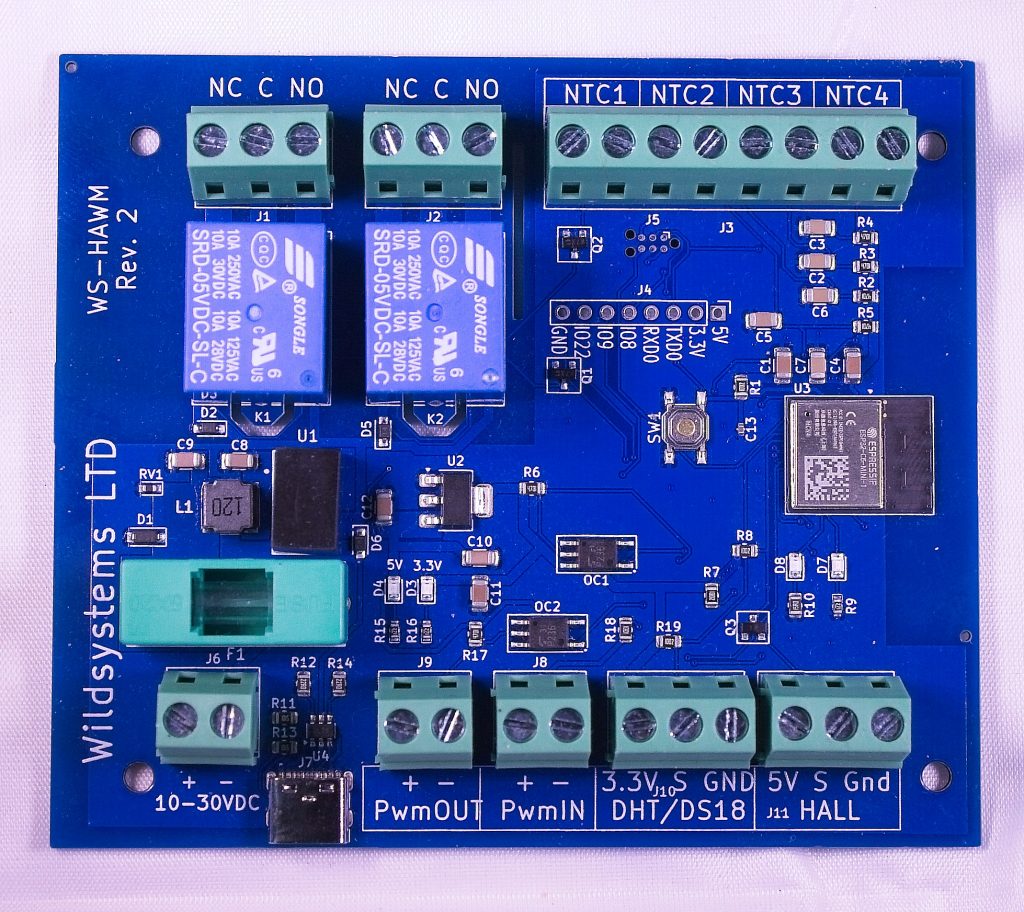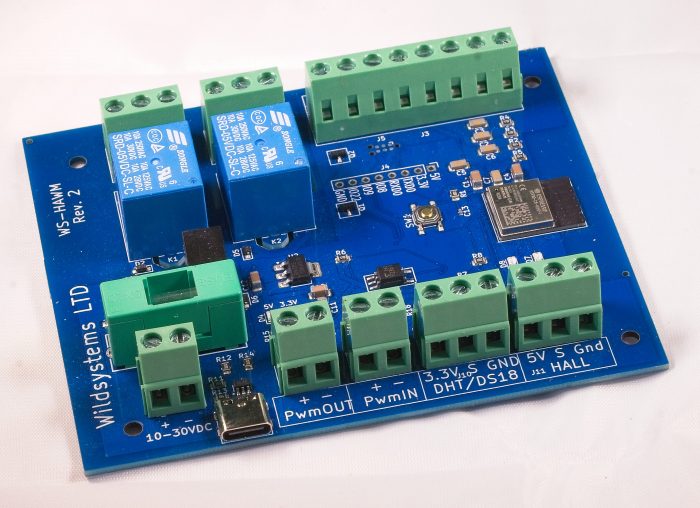Why build my own controller?
I got tired of countless awkwardly soldered wires and oddly stacked breakout boards around the popular ESP32 dev kits. The solution was simple: create my own controller, one that integrates everything I need neatly in one place, without looking like an improvised contraption from Mars.
Why ESP32-C6?
In short: Wi‑Fi 6.
I want my devices at home to be future-proof for the next decade instead of wondering a year or two from now why the Wi‑Fi network supports a new standard but my IoT modules don’t.
Hardware

- Size: 105 × 80 mm — convenient for most projects.
- Core: ESP32‑C6‑MINI‑1 module.
- Power supply: 10–30 V (24 V recommended), with fast fuse, reverse polarity protection, and surge protection.
- I/O features:
- NTC temperature sensors
- Relay outputs
- Optocouplers for inputs/outputs
- Level shifter for Hall sensor
- One-Wire port for Dallas temperature sensors
- Option to add 5 extra GPIO outputs directly from the MCU (will be on a rail)
- Programming & Debug: Tag‑Connect compatibility and USB‑JTAG debugger, with the option to power the board via USB only.
All project files are available on GitHub: ESP32‑C6‑DIY‑controller.
Who is it for?
This DIY controller is designed as a base for my home automation modules but it’s general enough for other makers too. If you enjoy building, integrating, and fine‑tuning without fighting cable spaghetti — you’ll probably like it.
Software
Supports:
- ESPHome for quick Home Assistant integration
- ESP‑IDF / Arduino for more specific or advanced requirements
Why I built it
Simple — I wanted a solid foundation for my projects at home. Knowing that new modules will inevitably be added, I didn’t want to start from scratch each time. So I bundled the most useful components into a single, robust, and well‑protected controller.
Instead of tangled wires (that always seem to find a way to get messier), now I have a tidy platform that just works.
First practical use
Currently under development: an ESPHome project that measures the delivered heating power of the floor heating system. It monitors flow rate and temperature difference, calculates power and energy in real time, and passes the data to Home Assistant. It also controls the PWM of a Wilo‑Varios PICO‑STG circulation pump to maximize heat exchange between the heat pump’s internal circuit and the floor heating — and all that without a single flying wire.
